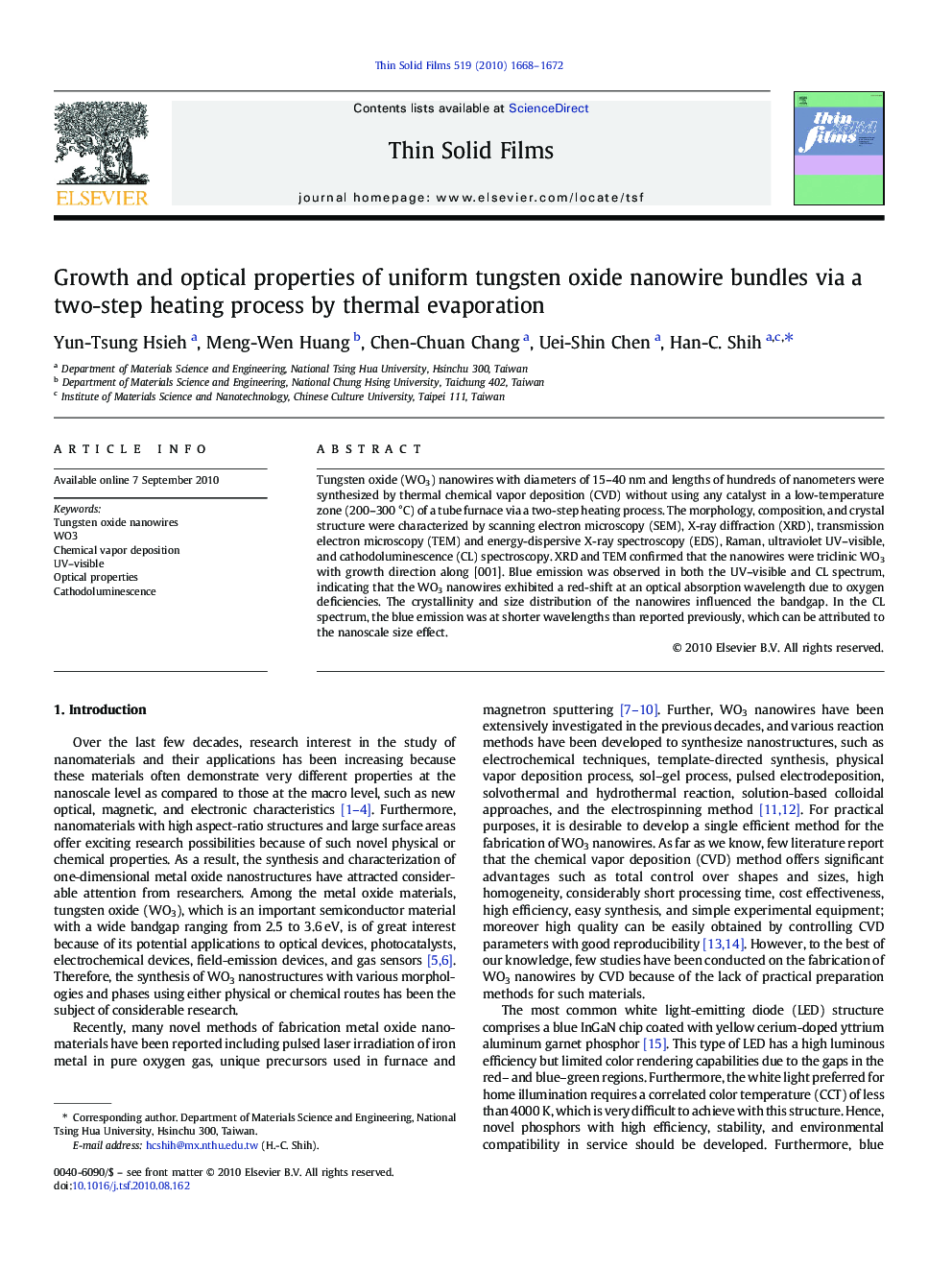| Article ID | Journal | Published Year | Pages | File Type |
|---|---|---|---|---|
| 1669795 | Thin Solid Films | 2010 | 5 Pages |
Tungsten oxide (WO3) nanowires with diameters of 15–40 nm and lengths of hundreds of nanometers were synthesized by thermal chemical vapor deposition (CVD) without using any catalyst in a low-temperature zone (200–300 °C) of a tube furnace via a two-step heating process. The morphology, composition, and crystal structure were characterized by scanning electron microscopy (SEM), X-ray diffraction (XRD), transmission electron microscopy (TEM) and energy-dispersive X-ray spectroscopy (EDS), Raman, ultraviolet UV–visible, and cathodoluminescence (CL) spectroscopy. XRD and TEM confirmed that the nanowires were triclinic WO3 with growth direction along [001]. Blue emission was observed in both the UV–visible and CL spectrum, indicating that the WO3 nanowires exhibited a red-shift at an optical absorption wavelength due to oxygen deficiencies. The crystallinity and size distribution of the nanowires influenced the bandgap. In the CL spectrum, the blue emission was at shorter wavelengths than reported previously, which can be attributed to the nanoscale size effect.
